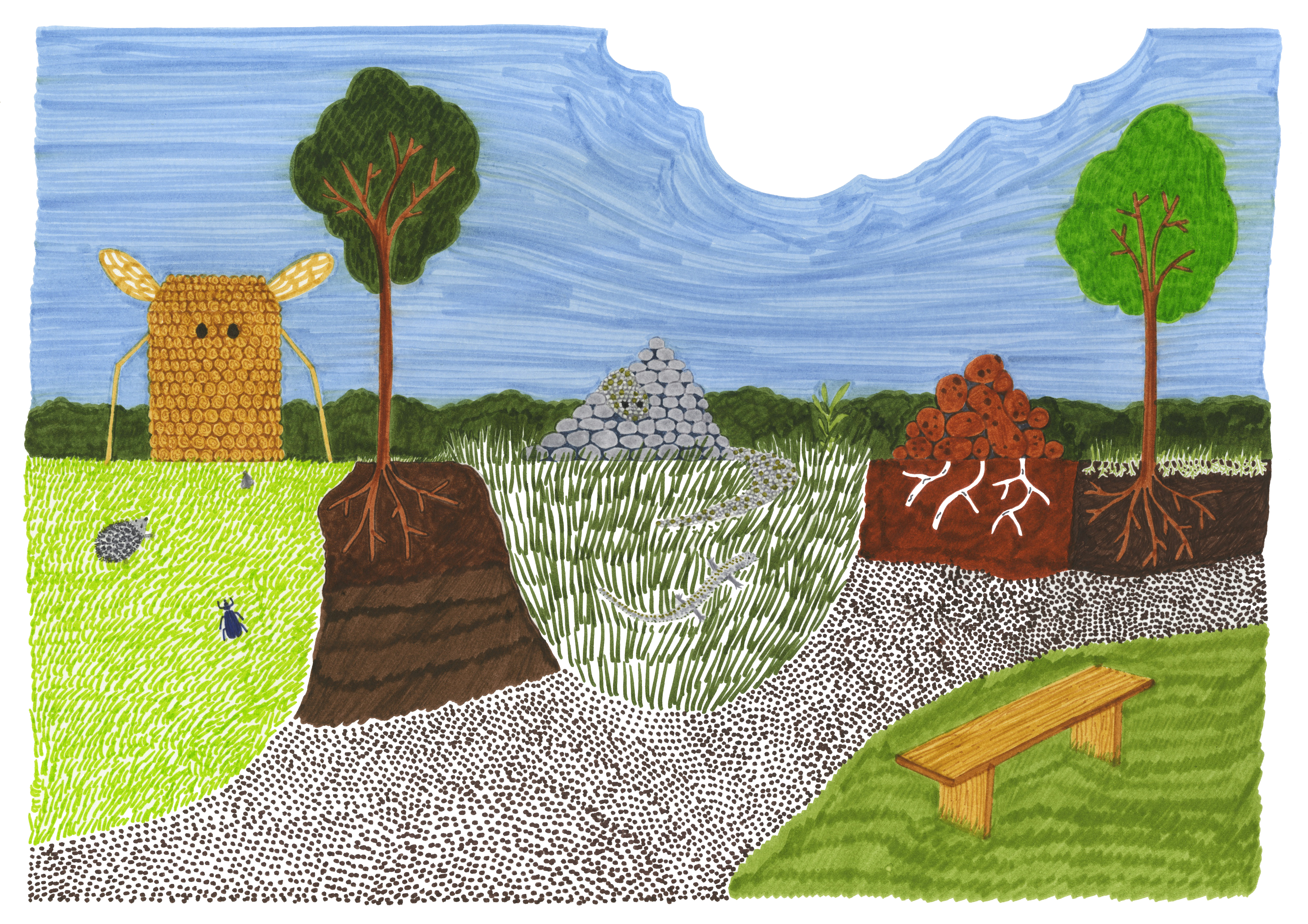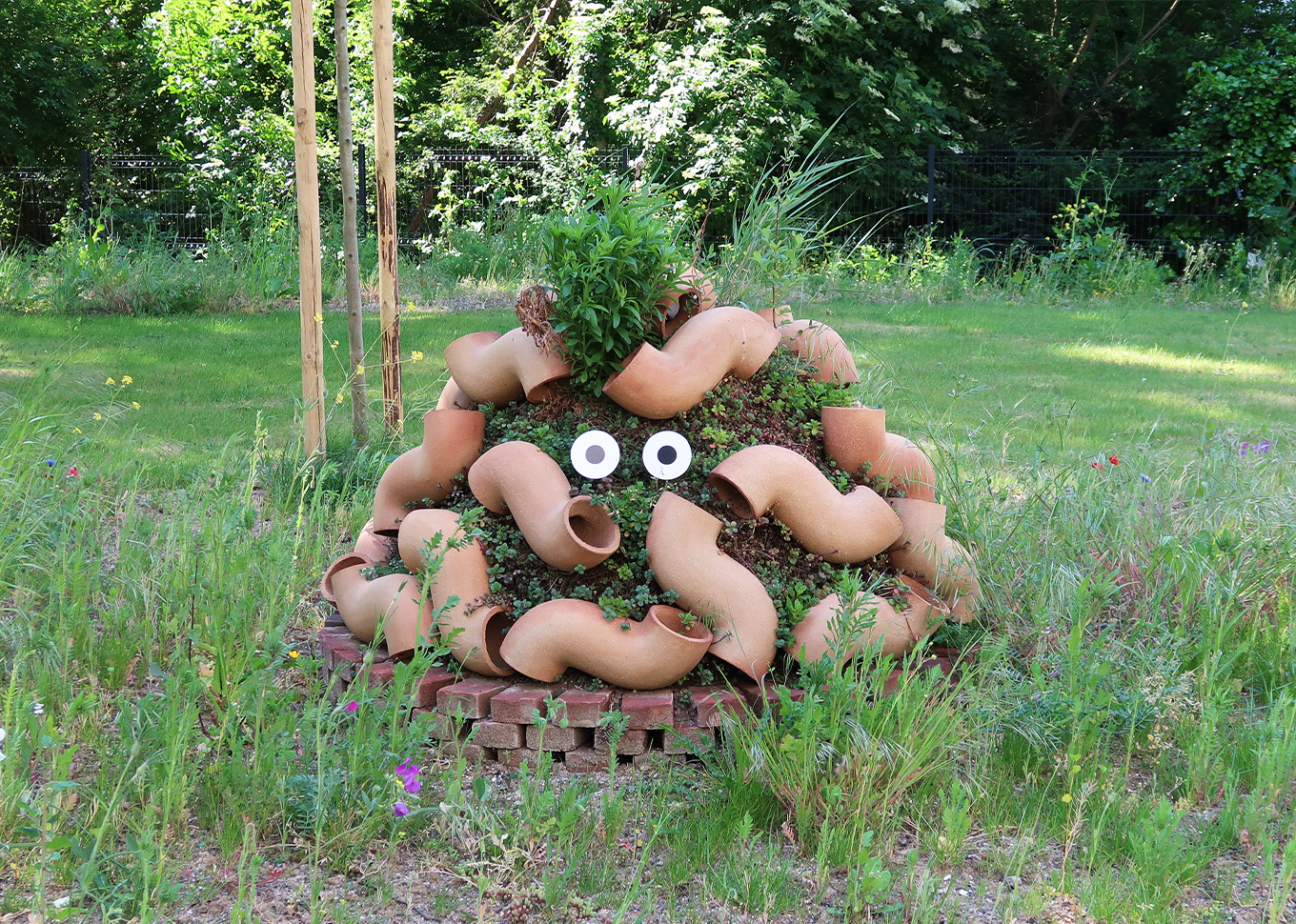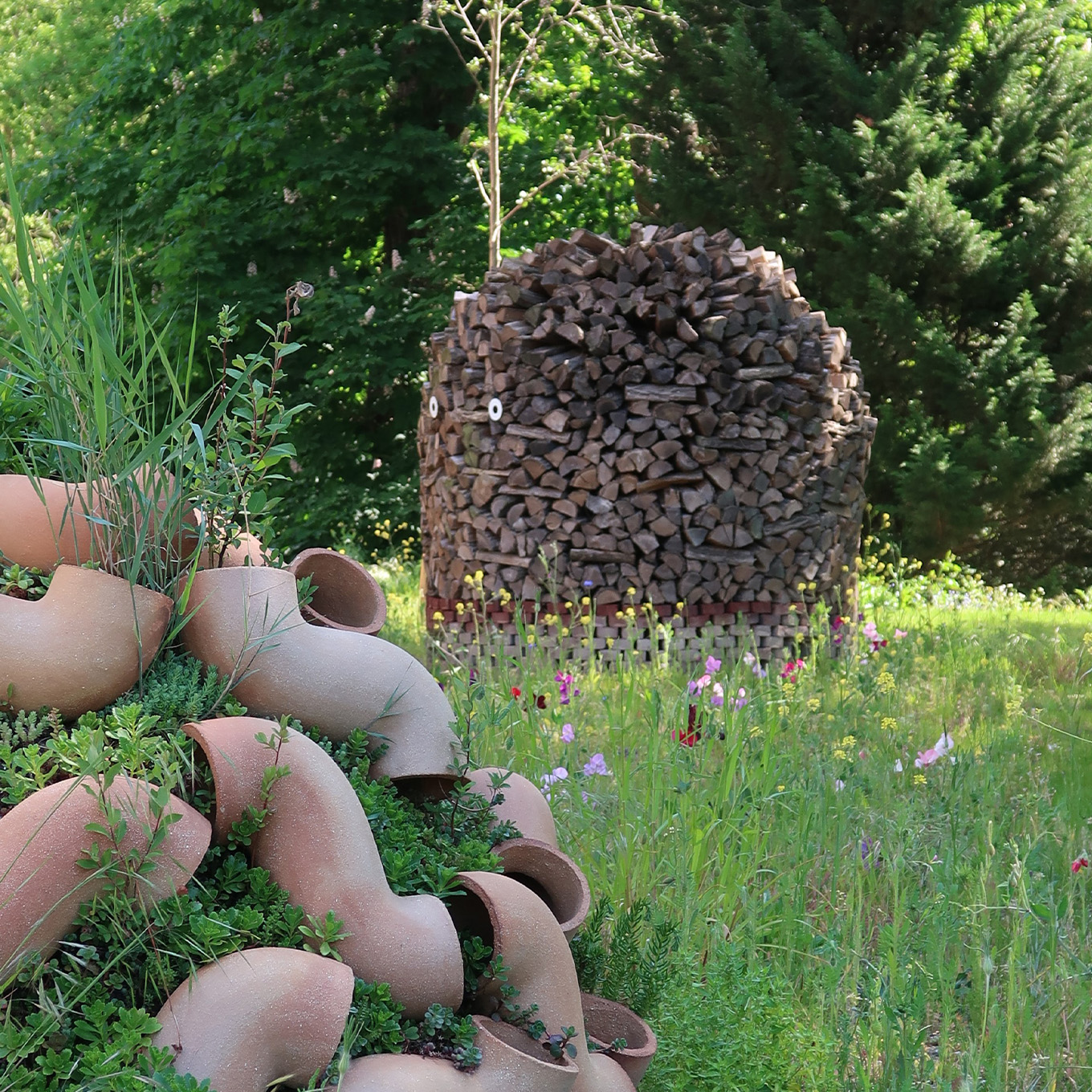
Emphasize the interdependence of plant and animal species in the garden
Turricules are based on the ecological diagnosis carried out before the construction of a student residency in Villeneuve d’Ascq. They seek to highlight the interdependent relationships between plant and animal species in the garden by creating shelters for insects, birds, and small mammals.
Turricules consist of three sculptures: a pile of wood for beetles and hedgehogs, a pile of stone for wall lizards and reptiles, and a pile of earth for earthworms. Each sculpture incorporates a representation of a remarkable element of the animal it houses. Eyes that point towards the building, like an invitation to dialogue between humans and non-humans.
The term “turricules” (meaning worm castings in French) refers to the concentric deposits of soil and plant debris that earthworms release after digestion.

The wood turricule was designed to shelter beetles and hedgehogs.
It consists of a brick base, a pile of acacia logs (Holz Hausen storage technique), three hedgehog shelters and glazed metal eyes.

The stone turricule has been designed to house wall lizards and reptiles.
Offset metal parts, designed to concentrate heat and foster reptiles and glazed metal eyes are inserted in a pile of stone, sitting on a brick base.

The soil turricule has been designed to accommodate the activity of earthworms.
On top of a brick base, a pile of earth (from the site soils), molded modules in chamotte stoneware, and glazed metal eyes.
The center is left in the ground to allow the earthworms to circulate.




Work produced as part of the 1 building, 1 artwork charter, supported by Bouygues Immobilier Nord Ouest at 26 rue des Époux Labrousse in Villeneuve d'Ascq, with the collaboration of Studio Idaë, Camille Grosperrin (ceramist), and the company Mon petit jardinier.
Photo credits: Julie Deloraine.